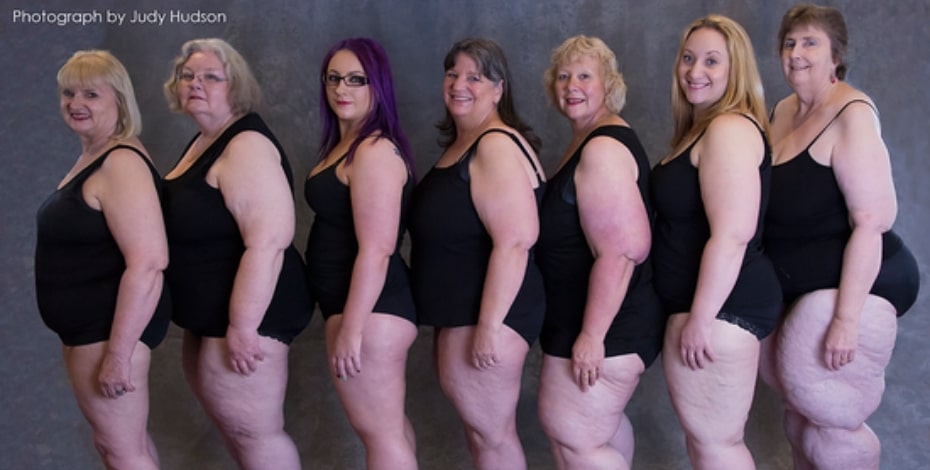
Diagnosing lipoedema

There is research underway at the University of Sydney that aims to improve the diagnosis and assessment of lipoedema.
Lipoedema is a complex genetic condition, occurring in up to 11 per cent of women.
It’s characterised by a disproportionate accumulation of nodular painful fat in the lower body—the legs and the buttocks—and variable amounts of swelling, resulting in poor mobility and quality of life.
Lipoedema typically begins at puberty or at other times of hormonal upheaval and weight gain, including pregnancy and menopause, and it is a chronic, lifelong condition.
In many patients, it is not diagnosed for years or is mistaken for obesity or lymphoedema.
Helen Eason received a PRF Seeding Grant in 2020 to investigate non-invasive assessment tools for differential diagnosis of lipoedema.
The APA Cancer and Lymphoedema Physiotherapist has been working with patients with lymphoedema and lipoedema for more than 20 years, initially as a physiotherapist in the UK, at the Monash Medical Centre and more recently as a private practitioner.
Her PhD, currently underway at the University of Sydney, aims to improve the diagnosis and assessment of lipoedema.
She received a PRF Seeding Grant in 2020 for a project looking at non-invasive devices as potential assessment tools.
Helen’s interest in lipoedema grew out of seeing increasing numbers of clients with the condition at her practice, which specialises in lymphoedema rehabilitation.
While lymphoedema is relatively well understood, lipoedema is neither well known nor well understood, she says.
A further complication is that patients with lipoedema often become very obese and will also start showing symptoms of lymphoedema.
It is unknown if the lymphoedema is secondary to disease progression, to the developing abdominal obesity, to ageing lymphatics or to a combination of all three scenarios together. And because diagnosis often occurs quite late, treatment options can be limited.
‘When we get morbid obesity and lipoedema together, it’s catastrophic for the lymphatic system,’ Helen says.
‘We’re not sure if it is because of the fat cells in the legs just growing, and growing constricts the lymphatics, or whether it’s the obesity squashing them from above or if it’s a bit of both.
'This is where my research is coming in, to try to tease all of these things apart.’
Typically, lipoedema is diagnosed by the assessment of subjective symptoms.
Helen’s PRF Seeding Grant project aims to identify non-invasive assessment tools to distinguish lipoedema from lymphoedema and obesity.
Two assessment tools have recently been used in lipoedema research—bioimpedance spectroscopy (BIS) and ultrasound—but each method only looks at one component of the condition.
By combining the two assessments, Helen hopes to be able to better distinguish between lipoedema, lymphoedema and obesity.
In an earlier pilot study, Helen used BIS, which measures tissue and fluid volumes, on each participant’s whole leg to get an overall picture of differences in body composition in lipoedema versus lymphoedema.
The current study will also include BIS to measure smaller, specific segments of the body to see if that provides a better picture of the two conditions than whole-leg BIS.
Ultrasound will be used to assess skin and subcutaneous fat thickness and for its ability to image fluid within adipose tissue in the key areas of fat deposition.
Helen says that the PRF Seeding Grant will allow her to complete the study by funding a research assistant and allow travel between Melbourne, the Gold Coast and Sydney for data
collection.
COVID-19 has significantly delayed the project, but she is finally at the point of collecting data.
If the results are promising, Helen is planning to apply for further grants to look at how the results compare to non-contrast MRI lymphography to investigate their ability to aid further diagnosis.
Helen hopes that this study will allow researchers and clinicians to accurately differentiate between lipoedema, lymphoedema and obesity.
Currently, finding the right treatment is a guessing game, she says, with compression and exercise, especially strength training, the best options.
Recent studies suggest that a low-carbohydrate, ketogenic diet may help some women, although other studies cite that traditional calorie-restricted dieting doesn’t reduce the nodular lower body fat.
‘Treatment for lipoedema needs a multidisciplinary team approach.
'Physios can use soft tissue techniques to try to break up fibrosis between the fat cells and get the tissue in much better health.
'If there’s no lymphoedema there, it’s more about getting the tissue healthy, reduce inflammation and get the woman in the best possible physical health—get her pain down and, where required, get some psychological intervention,’ Helen says.
‘If we can quantify the disorder, then we can put [patients] through proper randomised controlled treatment trials comparing compression and exercise only versus compression, exercise and a compression pump at home versus manual lymphatic drainage, and really tease out the next step of what actually works for these women.’
Helen hopes that at the very least, her research will help physiotherapists and other clinicians to better identify lipoedema in their patients.
‘These women come into physio clinics after procedures such as knee and hip replacements, with higher than normal levels of pain, stubborn oedema, struggling to move, and the physio doesn’t realise they’ve got a painful fat disorder.
'Physios could be picking up the signs in women who have never been diagnosed and sending them for assessment,’ Helen says.
‘Lipoedema is everybody’s business because we all treat women.
'And if there’s five to 11 per cent of women walking around with this, that’s a fair number of women.’
© Copyright 2025 by Australian Physiotherapy Association. All rights reserved.





